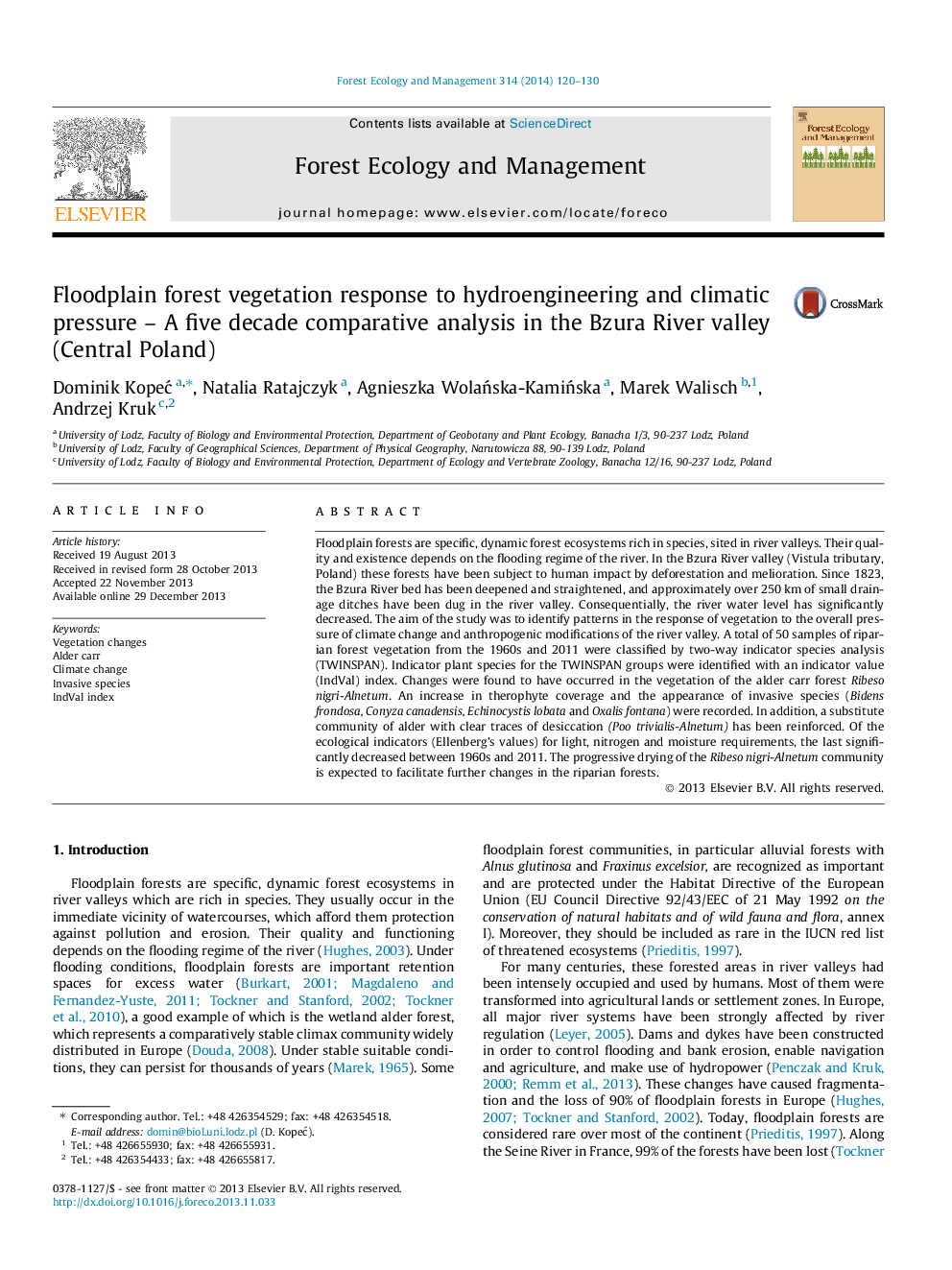| کد مقاله | کد نشریه | سال انتشار | مقاله انگلیسی | نسخه تمام متن |
|---|---|---|---|---|
| 86941 | 159223 | 2014 | 11 صفحه PDF | دانلود رایگان |

• Impact of the hydroengineering works and climate change.
• Degeneration of alder carr forest ecosystems.
• Changes in the species composition.
Floodplain forests are specific, dynamic forest ecosystems rich in species, sited in river valleys. Their quality and existence depends on the flooding regime of the river. In the Bzura River valley (Vistula tributary, Poland) these forests have been subject to human impact by deforestation and melioration. Since 1823, the Bzura River bed has been deepened and straightened, and approximately over 250 km of small drainage ditches have been dug in the river valley. Consequentially, the river water level has significantly decreased. The aim of the study was to identify patterns in the response of vegetation to the overall pressure of climate change and anthropogenic modifications of the river valley. A total of 50 samples of riparian forest vegetation from the 1960s and 2011 were classified by two-way indicator species analysis (TWINSPAN). Indicator plant species for the TWINSPAN groups were identified with an indicator value (IndVal) index. Changes were found to have occurred in the vegetation of the alder carr forest Ribeso nigri-Alnetum. An increase in therophyte coverage and the appearance of invasive species (Bidens frondosa, Conyza canadensis, Echinocystis lobata and Oxalis fontana) were recorded. In addition, a substitute community of alder with clear traces of desiccation (Poo trivialis-Alnetum) has been reinforced. Of the ecological indicators (Ellenberg’s values) for light, nitrogen and moisture requirements, the last significantly decreased between 1960s and 2011. The progressive drying of the Ribeso nigri-Alnetum community is expected to facilitate further changes in the riparian forests.
Journal: Forest Ecology and Management - Volume 314, 15 February 2014, Pages 120–130